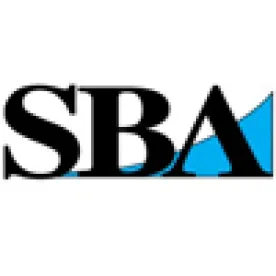The Small Business Administration (SBA) has released two loan necessity questionnaire forms (Form 3509 for for-profit borrowers and Form 3510 for nonprofits) for lenders to transmit to certain Paycheck Protection Program (PPP) borrowers. The SBA intends to use these forms to collect information “to inform SBA’s review of [a borrower’s] good-faith certification that economic uncertainty made [the borrower’s] loan request necessary to support [its] ongoing operations.” While this is not a surprise, the information sought by the SBA is extensive, and much of it was unknown to many borrowers at the time of their loan application.
IN DEPTH
While it is unclear exactly when lenders will send the forms to borrowers, we recommend that borrowers with loans totaling $2 million or more (including affiliates’ loan amounts) begin preparing their responses and collecting supporting documentation given the short turnaround time to respond (10 business days after receipt). We also recommend that these borrowers prepare their response at the direction of counsel to keep drafts and related communications protected by the attorney-client privilege. Please let us know if you want to set up a time to discuss how to best prepare for and respond to this form.
The loan necessity forms do not include any new evaluation standards or metrics, but they suggest there will be additional scrutiny of borrowers that:
-
Had significant cash on hand at the time of application;
-
Are owned by publicly traded companies;
-
Are owned by private equity/hedge funds/venture capital firms; and/or
-
Compensated employees or owners in an amount that exceeds $250,000 on an annualized basis over the forgiveness period.
OVERVIEW OF QUESTIONS AND INFORMATION REQUESTED ON FORM 3509 (FOR-PROFIT BORROWERS)
The form is split up into two “assessment” sections: (A) Business Activity; and (B) Liquidity. Both sections allow the borrower to “provide additional comments on any question” up to 1,000 characters per section.
A. Business Activity Assessment
-
Gross revenue in Q2 2020 v. Q2 2019 (or Q1 2020 if the business didn’t exist in Q2 2019).
-
Must provide supporting documentation.
-
-
Whether a governmental authority ordered the borrower to shut down at any time since March 13, 2020.
-
Whether a governmental authority ordered the borrower to “significantly alter its operations” (including capping the number of people in a location, limiting to outdoor service and reconfiguring employee workspaces) at any time since March 13, 2020, and how much the borrower spent for these alterations.
-
Whether the borrower voluntarily ceased or reduced its operations due to COVID-19, and if so, the reasons for doing so (including employees contracting COVID-19 and supply chain disruptions).
-
Whether the borrower voluntarily altered its operations due to COVID-19 (including capping the number of people in a location, limiting to outdoor service and reconfiguring employee workspaces) and how much the borrower spent on these alterations.
-
Whether the borrower began any new capital improvement projects not due to COVID-19, and if so, how much it spent on such projects.
-
Borrower’s North American Industry Classification System (NAICS) code.
B. Liquidity Assessment
-
Cash and “cash-equivalent” on hand as of March 31, 2020 (or June 30, 2020, if borrower applied after July 1, 2020).
-
Must provide supporting documentation.
-
-
Any dividends or capital distributions (other than for pass-through estimated tax payments) paid to owners between March 13, 2020, and the end of the covered period, and the amount of such payments.
-
Must provide supporting documentation.
-
-
Any prepayments of outstanding debt between March 13, 2020, and the end of the covered period.
-
Must provide supporting documentation.
-
-
Any compensation paid to employees or owners making $250,000 or more on an annualized basis.
-
Must provide supporting documentation.
-
-
Whether the borrower’s equity securities were listed on a national securities exchange on the application date, and if so, the market capitalization on that date.
-
Whether any publicly traded company owned 20% or more of the borrower’s equity on the application date.
-
If not publicly traded, the borrower’s book value as of March 31, 2020 (or June 30, 2020, if application submitted after July 1, 2020).
-
Whether the borrower was a subsidiary of (50% or more owned by) another company on the date of application, and if so, whether the parent company was incorporated outside of the United States or is a publicly traded company.
-
Whether 20% or more of the borrower was owned by a private equity firm, venture capital firm or hedge fund (including a fund of such firms) on the date of application.
-
Whether the borrower was affiliated with or a subsidiary of a foreign government-owned entity on the date of application.
-
Whether the borrower directly received any other Coronavirus Aid, Relief, and Economic Security (CARES) Act funds, excluding tax benefits, and if so, the type and amount of such funds.
Certifications
-
Borrowers must certify that all information provided in the form and supporting documents “is true and correct in all material respects.”
-
Signatories must certify that they have undertaken a “reasonable inquiry of people, systems, and other information available to the borrower.”







 />i
/>i

